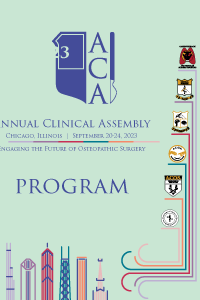Urological Surgery
Understanding the Learning Curve of GreenLight Photosensitive Vaporization of the Prostate in Community Practice
- DD
Daniel C. Drach, DO
Franciscan Health Olympia Fields
Chicago, Illinois, United States
Primary Presenter(s)
Methods or Case Description:
This retrospective study examined 348 patients undergoing initial BPH treatment with PVP (180W GreenLight XPS) between August 2015 and June 2022 in a community hospital by a single general Urologist. Total prostate energy delivery (kJ) was recorded and expenditure per prostate size (kJ/mL) calculated. Case efficiency, defined as the ratio of active vaporization time (VT) to total lasing time (LT) was calculated. The learning curve was analyzed in terms of changes over time for kJ/mL and VT/LT to reach a goal of >5 kJ/mL and >66%, respectively, as previously defined.
Outcomes:
The goal of energy delivered per mL prostate of ≥5kJ/mL was reached within the first 50 cases, with continued improvement to ≥7kJ/mL by 150 cases. PVP efficiency of >66% vaporization to lasing time was not reached until after 200 cases.
Conclusion: Our experience illustrates the steep learning curve of PVP, with a rapid increase in energy delivered per mL of prostate and a slower but sustained improvement in efficiency over time. Our data suggest that ≥200 cases may be necessary to achieve optimal energy and efficiency results when performing PVP.

